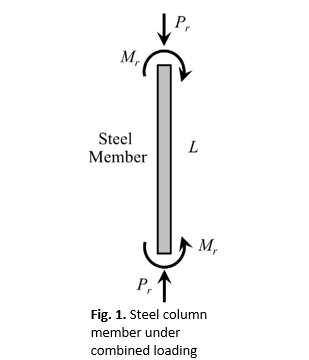Application of Multiple Linear Regression Method in Steel Column Design under Combined Loading
DOI:
https://doi.org/10.37934/araset.57.1.240252Keywords:
Multiple linear regression, ANOVA, Beam-column steel design, Optimize designAbstract
The article explores using multiple linear regression (MLR) approach to predict the cross-section of beam-column steel members. These members are complex in design, as they must withstand bending and axial forces. The design process involves multiple safety checks according to design standards. The first step in the design procedure is to calculate and verify the axial capacity of the member. Following that, the flexural capacity is calculated. Finally, the combined load capacity is examined, often involving a trial-and-error process. If the initially selected section cannot withstand the applied forces, a new section must be chosen, and the calculations must be repeated. This study employs a multiple linear regression approach to investigate the relationship between member properties (such as length and cross-section) and load design parameters (axial and bending forces). The primary objective is to predict the beam-column steel member’s elastic section modulus (Sx). The regression equation derived from the study is as follows: Sx = 18.000L + 6.839Pr + 47.193Mr – 129.093, with an R-square value of 0.985. The histogram of the equation exhibits symmetry and a standard distribution, while the typical probability plot demonstrates a relatively linear trend. Two examples are presented to evaluate the efficiency of the regression equation. The first example confirms the efficiency of the equation by determining the cross-sectional size by employing the regression equation and using it to verify the safety according to EIT design standards. The second example is the application of the equation for estimating the size of other types of steel members. This study suggests that the regression equation can effectively predict the size of beam-column steel members, providing reliable results for practical design applications.




























